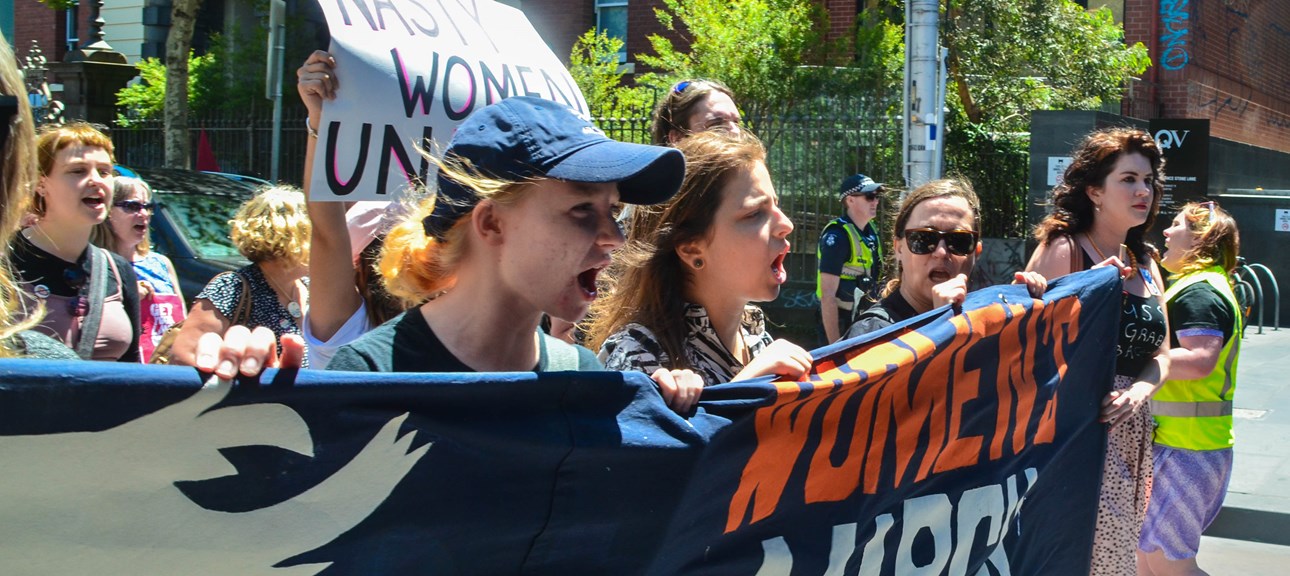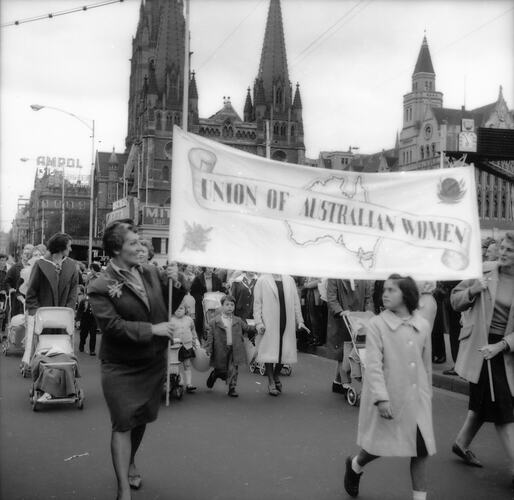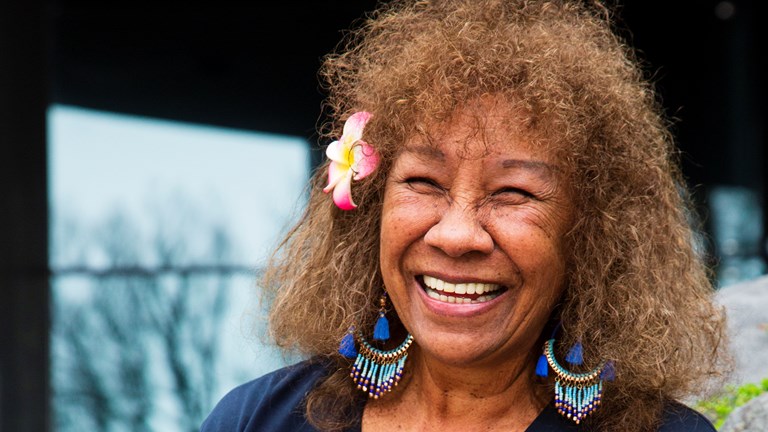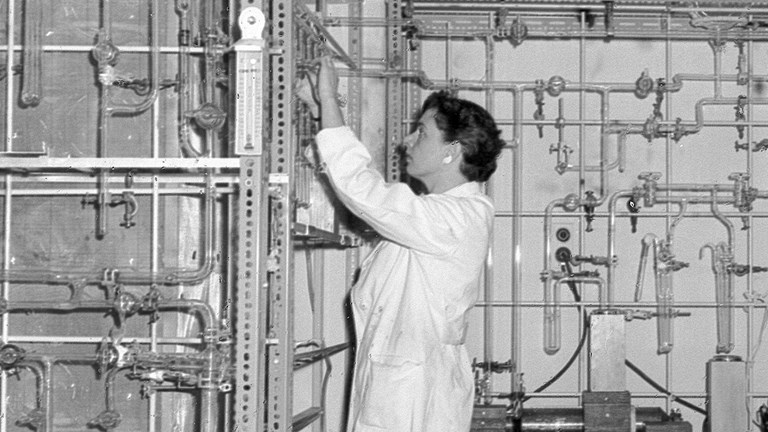History starts today
Contemporary collecting requires awareness of history-in-the-making, as today's protest turns into tomorrow's collectables.
On Saturday 21st January 2017 about 6,000 women, men and children marched from the State Library of Victoria to Parliament House as part of the Women's March on Melbourne.
It was one of more than 600 coordinated 'Women's March on...' protests that took place across the world on the 21st of January in defence of women's rights and against hatred and bigotry following Donald Trump's inauguration as President of the United States of America.
While global in scope and inspired by Donald Trump winning the US Presidency, the marches were nonetheless grassroots in nature with participants marching based on their own interpretation of recent events; some opposed Trump specifically, while others had broader concerns about feminism, women's rights, and the rights of people in the LGBTQ community.
Protest in the museum
Following the Women's March on Melbourne, Museums Victoria worked with organisers and participants to collect signs, banners and t-shirts used by protesters during the march as well as photographs from the day and oral histories with protesters. These items were collected as part of the museum's Politics and Society collection which seeks to 'identify significant areas of public protest in the Victorian community, including regional and community campaigns'.
The museum decided to collect material from the Women’s March on Melbourne for a number of different reasons. One of the things we aim to do as part of the Politics & Society collection is to collect contemporary protest material so that we can show how protest has both changed and stayed the same over time. For example people still march through the streets holding banners and signs but they now use social media to organise the protest and attract other protesters, rather than word of mouth, flyers and newsletters.
Feminism back by popular demand
Why the Women's March on Melbourne specifically? Museums Victoria has a collection of material relating to women's protest and suffrage dating back to the early 1900s. So collecting material from the Women’s March on Melbourne allows the museum to build on that existing collection of objects to explore the history and evolution of women’s involvement in political and social protest over time.
Some of these objects such as this 1908 sterling silver suffragette muffineer with her placard 'we can make things hot for you' are amusing despite the serious nature of the subject – campaigning for women’s right to vote.
Whereas others such as this 1980s 'Women against nuclear energy' badge have little time for frivolity; the clenched fist in the centre of the badge proclaiming the group’s commitment and seriousness to their cause.
Women's March on Melbourne Collection
Similarly the Women's March on Melbourne signs, banners and t-shirts illustrate the different reasons people had for marching and the ways in which they chose to communicate that message. Like the suffragette muffineer some of the slogans are amusing and clever: 'Don't Diet Riot', 'Love Trumps Hate’, 'Pussy Grabs Back' and 'Feminism Back by Popular Demand'.
The glitter, bright colours and puff paint use in creating these objects helping to retain a sense of lightness while communicating support for serious causes. However other signs are powerful for their simplicity and matter of fact tone, such as the plain brown paper sign with a handwritten slogan in black marker proclaiming ‘#Why I March…because I am a rape survivor’.
The handmade character of the signs, t-shirts and banners speaks to the grassroots nature of the protest in Melbourne. Looking closely at the large Women’s March on Melbourne banner you can see the remnants of hot glue around the edges of the lettering allowing you to picture one of the organisers constructing the banner on her living room floor. Another sign with the slogan 'Girls are Strong' constructed from cardboard tube, sticky tape and paper (a conservator’s nightmare!) has clearly been painted by a child, illustrating the participation of children as well as adults in the march.
Global connections
With museums from across the globe having collected material from 'Women's March On…' protests this small but mighty collection will also allow researchers and the public to explore the similarity and differences of these marches in different cities and countries. Which issues, slogans and symbols were common to all the marches?
Were some things unique to a particular city, state or country? Was the grassroots and inclusive nature of the Melbourne march also the case in the London and Washington marches?
We do know that at Museums Victoria and across the globe these signs and images from the day will be immortalised in the archive, adding to a long history of women’s protest.














